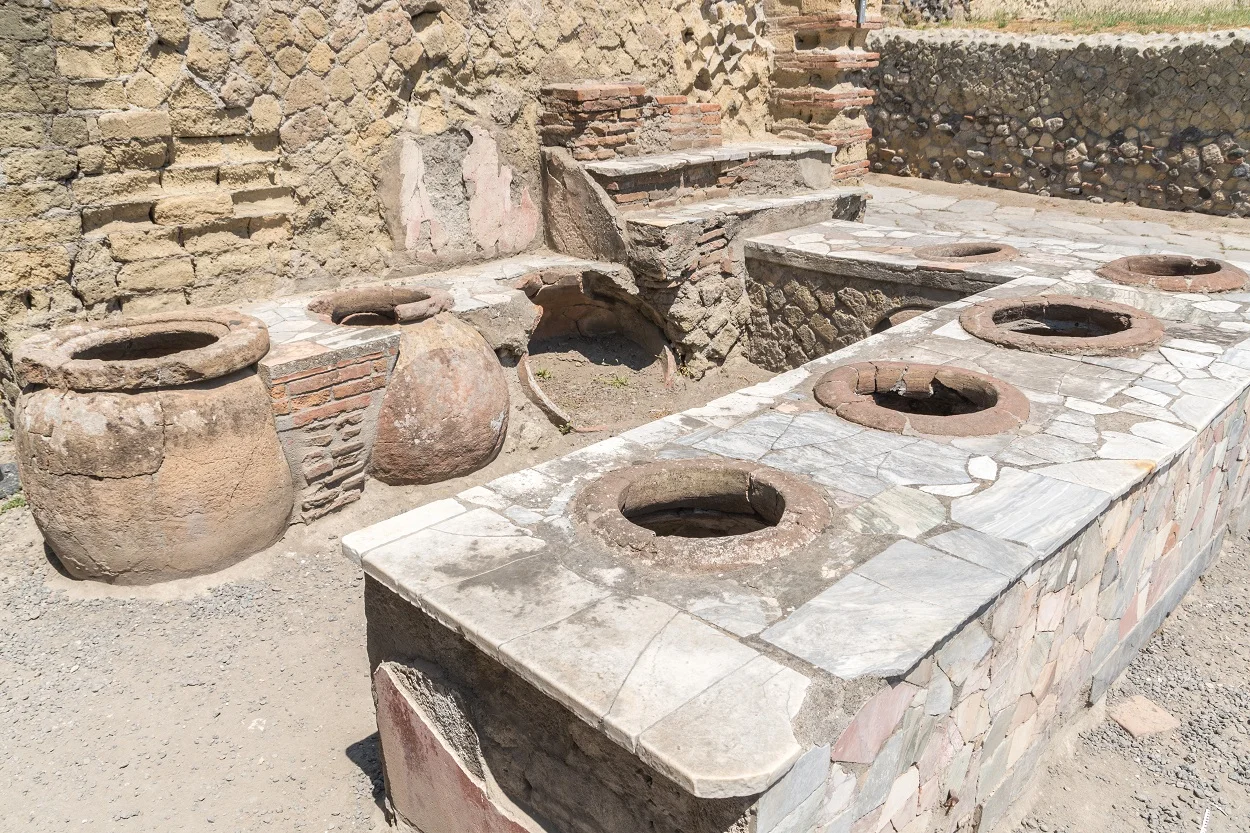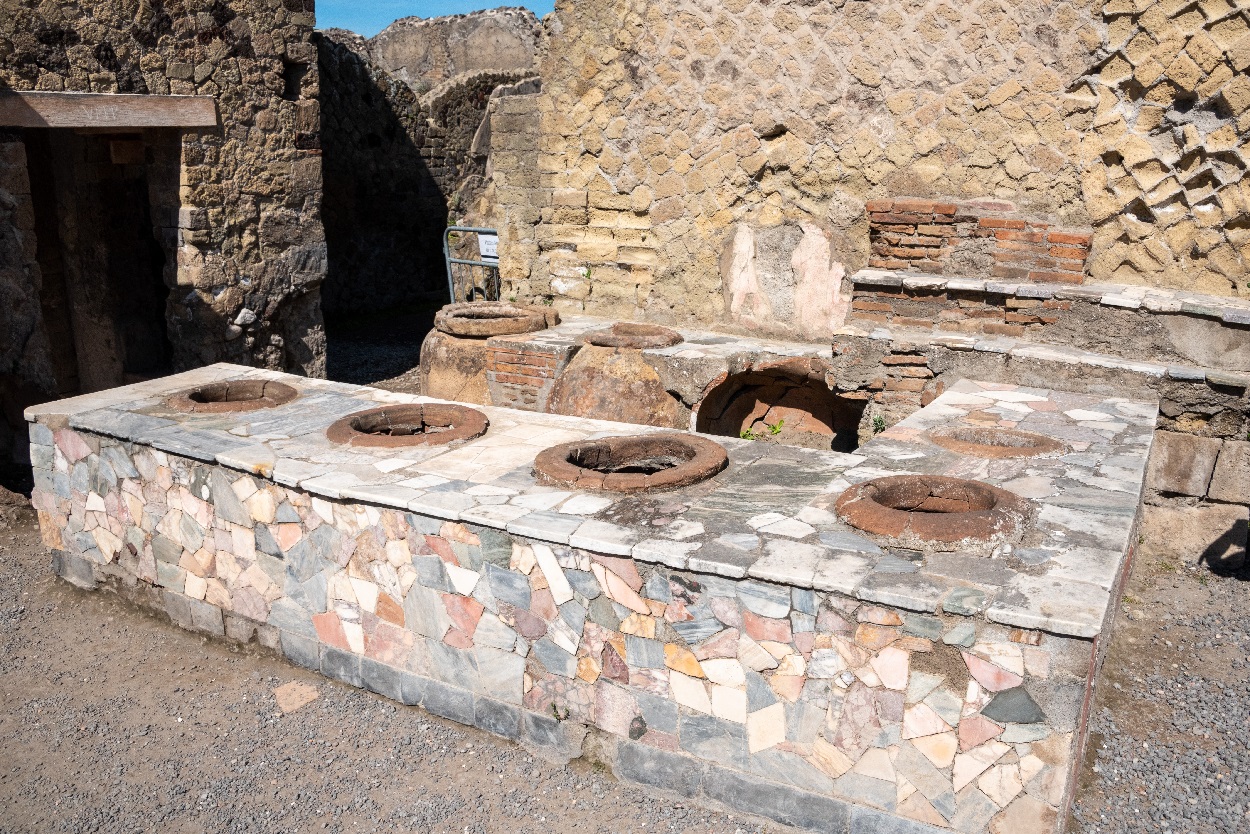During the Greco-Roman period, the fast-paced lifestyle of city dwellers gave rise to an early form of fast food dining at the thermopolium, a counter or small shop serving quick and affordable meals.
The name itself is derived from the Greek words thermos (hot) and poleo (to sell), highlighting their primary function.
They were mainly frequented by the lower and middle classes living in insulae (apartment buildings), which led to thermopolia being scorned by the upper classes.
Thermopolia typically had an L-shaped stone counter, embedded with terracotta jars (called dolia) to store and display hot and cold ready-to-eat food or beverages.
More extravagant thermopolia were decorated with colourful frescoes or mosaics, depicting various foods, animals, or mythological scenes – serving both a decorative and an informative function to advertise some of the menu options.

The fast food offerings varied and were tailored to meet local tastes and available ingredients.
Popular offerings included soups and stews made from various meats and seafood. Cooked protein dishes used duck, chicken, goat, pig, fish, and land snails, often accompanied with vegetables or garum, a fermented fish sauce. Non meat snacks on offer were seasonal fruits and cheeses, as well as bread and pastries.
Beverages were also provided, such as wines mixed with water or spices, or for the lower classes, a drink made by mixing water and wine vinegar known as Posca.
Thermopolia discovered at sites such as Pompeii and Herculaneum demonstrate that fast food dining was not just a modern innovation, but was also widely popular in antiquity.
In a way, the thermopolia of ancient Rome were the precursors to the fast food restaurants we know today. They served a vital function in urban life, catering to the needs of a diverse population.
Header Image Credit : Shutterstock







